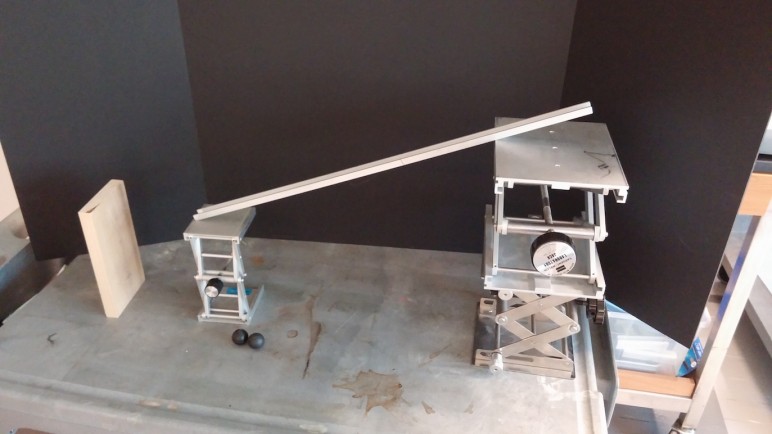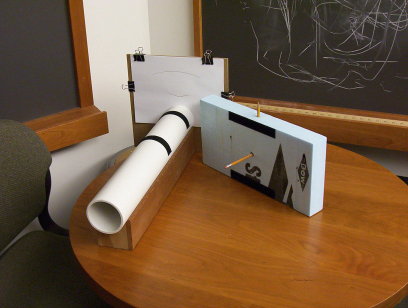Skip to content


- Two different balls can be rolled down incline to collide with wooden block. When rubber, bouncy ball collides with block, block tips over.
- However, when non-bouncy ball collides with block (looks identical to bouncy ball) block does not tip over. Balls have same size and weight.
Location
- Balls and block located in L02, section B5.
- Track in Lo2, section B2.
- Jacks in L35, section D1.


- Purpose: Demonstrate principles of stability.
- Balance styrofoam block (with pencils removed) on pvc cylinder
(non-velcro side to non-velcro side). Block is stable if balanced wide-base-down, and unstable if balanced thin-base-down. To demonstrate the relationship between the stability of the block and the location of its center of mass: insert a pencil into the block, as shown above; place the block onto the cylinder (velcro to velcro) such that the pencil makes contact with the attached paper; carefully rock the block back and forth to get a smooth pencil trace on the sheet of paper. The pencil trace represents the height of the block’s center of gravity as a function of angle. (The velcro simply keeps the block from slipping while making your trace). In theory, the block should balance if the height of the block is smaller than the diameter of the cylinder, and shouldn’t balance if the height of the block is larger than the diameter of the cylinder (assuming density of block is uniform).
- Located in L02, section B4



